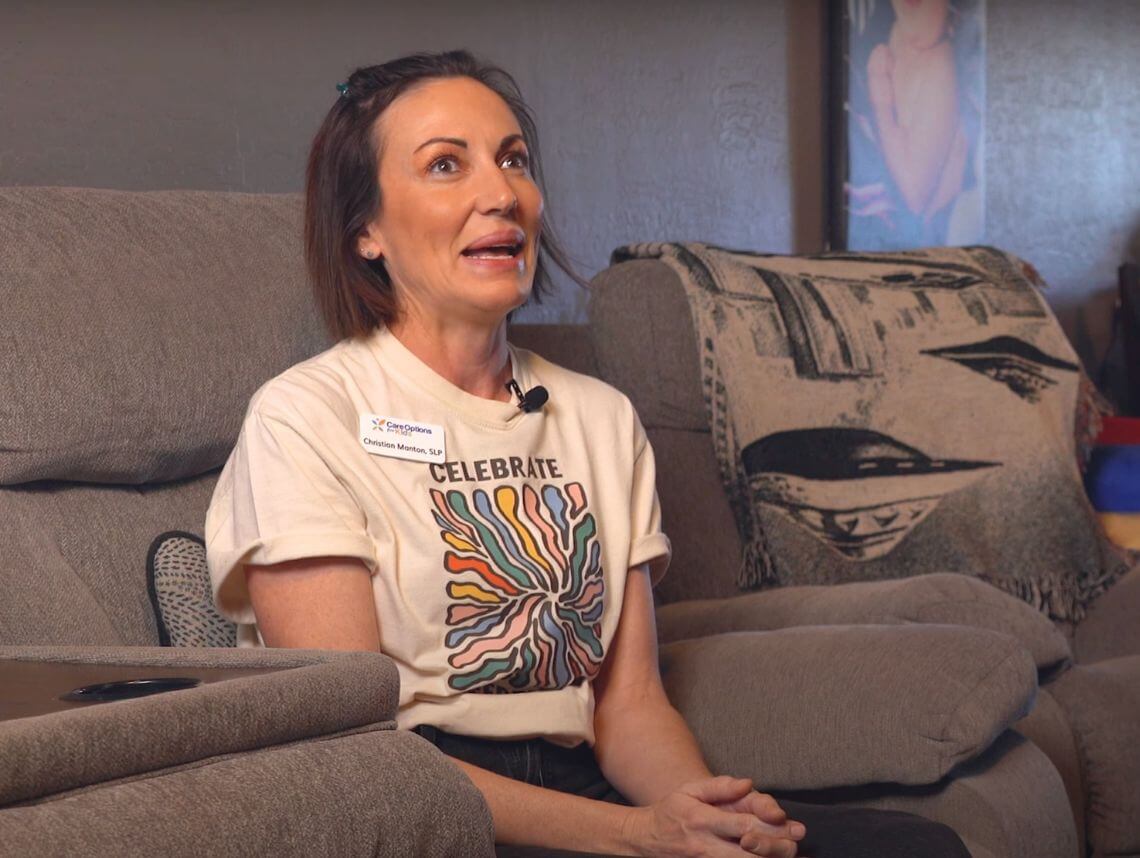Solace Blog
- Activities19
- Autism & Behavioral4
- Community154
- Early Intervention71
- Events & Giving Back20
- Extraordinary Kids22
- Family Caregiver4
- Home Care Therapy60
- News94
- Parent Articles83
- Patient Testimonial21
- Pediatric Therapy77
- Pediatric Therapy Career46
- Private Duty Nursing1
- School-Based Services1
- Telehealth Therapy27
- Tips & Advice66
Summer Reading List: Books to Inspire Therapist Growth
Cooling Off with Aquatic Therapy: Benefits and Best Practices
Sensory Activities For Kids

From School To Home: Christian’s Shift To Impactful Therapy
Speak, Listen, Connect: 6 Communication Strategies for Therapists
Speak, Listen, Connect: 6 Communication Strategies for Therapists
As we celebrate National Speech-Language-Hearing Month this May, we’re reminded of the universal challenge and importance of clear communication — not just for those specializing in speech and language but across all therapy disciplines. As speech-language pathologists, we have a toolkit of strategies that help. We hope these ideas can be as beneficial for PTs and OTs as they have been for us, making every therapy session more meaningful.
1. Understanding Without Words
Sometimes, what we don’t say speaks loudest. Observing a patient’s nonverbal cues, like hesitation or discomfort, can tell us a lot. How we position ourselves, our facial expressions, and even how we arrange our therapy space can make everyone feel more at ease. It’s about creating a space where trust grows naturally.
2. Bringing Visuals into Play
We’ve found that visuals can bridge gaps where words might fall short for kids. Something as simple as a drawn-out exercise or a colorful diagram explaining a body part’s function can light up a client’s understanding. It’s about making complex things simple and accessible.
3. Leveraging Tech in Small Ways
Even basic technology can help overcome communication hurdles. Apps that simplify communication, show pictures instead of words, and convert speech into text have opened new doors for us and our clients. It’s less about the gadgets and more about connecting better.
4. The Beauty of Simple Language
We’ve learned that clarity beats complexity any day. Using simple, everyday language ensures our patients grasp what we’re saying and keeps them engaged and involved. It’s not dumbing down; it’s about ensuring understanding.
5. Encouraging Two-Way Conversations
We make every session a dialogue, not a monologue. Asking for feedback or thoughts helps our kiddos feel heard and often gives us insights we might have missed. It’s not just about instructing; it’s about listening and adapting.
6. Stories That Teach and Connect
We’ve noticed that sharing stories or using metaphors can sometimes illustrate a point better than any textbook explanation. Stories help us find common ground, relate, and motivate.
Interested in joining our team?
Connect with Solace Pediatric Healthcare, a Care Options for Kids company, to find out how you can make a difference in the lives of families while advancing your career in a supportive and enriching environment.
Occupational Therapy Jobs | Speech Language Pathologist Jobs | Physical Therapist Jobs
Share this Post